These days, athletes are experts at taking care of themselves year-round. They watch their diet. They get enough sleep. On any given day, their body fat measurements are measured at proper levels.
Long ago, pro athletes actually needed offseason side hustles to make ends meet. Now they have an unmistakable full-time job. Healthy bodies are the ultimate resume.
So what if something goes awry? If a muscle feels tender or the back tightens up or the skin gets lacerated? If things just don’t feel right?
That’s the cue for a dizzying array of health and wellness professionals. Make no mistake: It takes a village to build and maintain a modern athlete.
Whether it’s surgeons, trainers, strength and conditioning coaches, psychologists, performance specialists, orthopedists, eye doctors, dentists, massage therapists or nutritionists, all the bases are covered (and then some).
When an emergency occurs at the field, rink or diamond, they are the first responders. Increasingly, they rely on cutting-edge training technology, such as a GPS microchip that measures the speed and acceleration of a football player on the practice field.
“Our medical and training staff is truly the best,’’ Rays center fielder Kevin Kiermaier said. “You can’t do your job unless you are on the field. They keep us healthy and able to play.’’
In a results-driven business, it’s usually about the scoreboard. The coaches coach, and the players play. But these are human beings, not robots.
Behind the scenes, care is needed. From head to toe. Get to know some of the professionals who keep Tampa Bay athletes at peak performance.
Answering the call
Tom Mulligan will soon enter his 18th season as the Tampa Bay Lightning’s trainer. After Tampa Bay won the 2004 championship, Mulligan’s name was engraved on the Stanley Cup. He’s working with his fifth head coach. He has seen a lot.
He’s still amazed by the players’ mode of transportation. It’s a skate, a piece of steel about an eighth of an inch.
“Before you can even think about stick-handling, shooting or avoiding body contact, you’ve got to be able to skate,’’ Mulligan said. “If [the average person] goes out for a public skate, they might realize, ‘Wait, this is pretty hard.’ Then you see the [hockey players] hitting at ice level. Wow. The skill, speed and size of the players, it’s so much more advanced than it used to be.’’
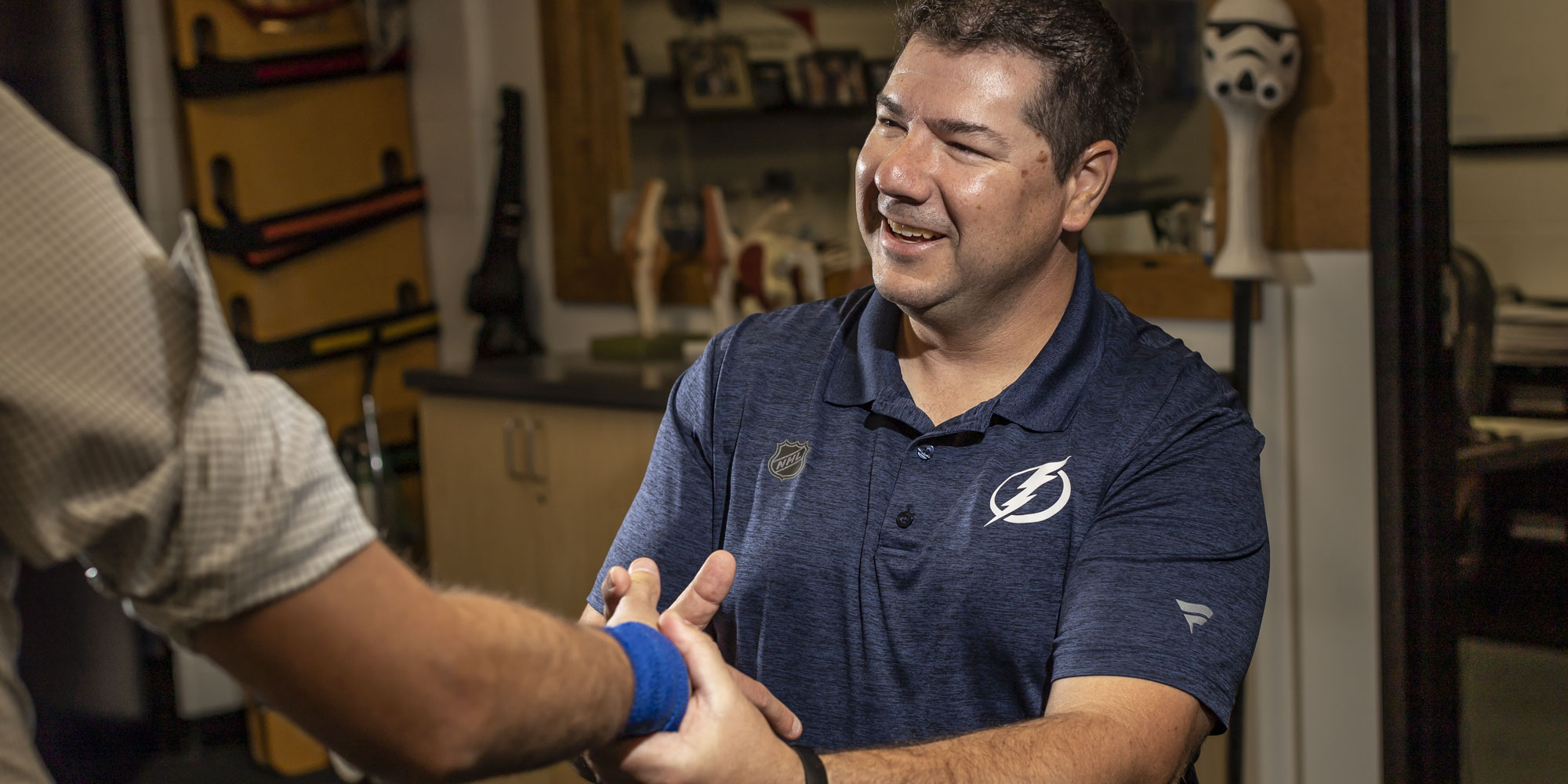
That puts added stress on Mulligan and his staff, which typically addresses pelvic, groin, hip, shoulder, knee and back issues. The modern positive: Players are more cognizant of injury prevention.
“When I first started, guys would keep going [with an injury] and not say anything,’’ Mulligan said. “They still play through a lot, but at least we’re aware of the issue. Players today know when their stride is a little off or they’re feeling discomfort.’’
Although Mulligan said games are the “fun part,’’ he acknowledges that he can “never truly relax because you always have to be ready for an emergency situation.’’
But some injuries defy preparation.
The pregame soccer tomfoolery in the bowels of Amalie Arena — a hockey tradition — sometimes causes Mulligan to wince. One player suffered a concussion when he tried to head the soccer ball, but ran into a wall. Another sliced open his leg as he slid under a service cart. There are constant rolled ankles.
“I guess it could be worse,’’ Mulligan said. “I mean, you can get hurt going to dinner.’’ Literally.
Once, a player called Mulligan on a non-game night. He said he was headed to Tampa General Hospital for stitches. What happened?
“He was eating crab legs at a restaurant and sliced his finger,’’ Mulligan said. “That was a strange call. He got sutured, went back and finished his dinner.
“Soon after that, he was sent to the minors. Well, the cut opened, it got infected, and he needed I.V. antibiotics. All from a crab leg. Sometimes in this business, you never know.’’
Collaborative Effort
According to Football Outsiders, a metrics website, the Tampa Bay Buccaneers were the NFL franchise hit the hardest by injuries in 2018, showing a 49.7% increase from the previous season. Whether it’s bad luck or grim reality, the Bucs want to reverse those figures.
New coach Bruce Arians has provided the team energy.
Meanwhile, staff members in strength, conditioning, training and medical services will provide synergy. They will utilize sports science concepts to help predict and prevent future injuries. Greg Skaggs, the University of Oregon’s former director of athletic medicine, was hired for a newly created position — director of athlete performance.
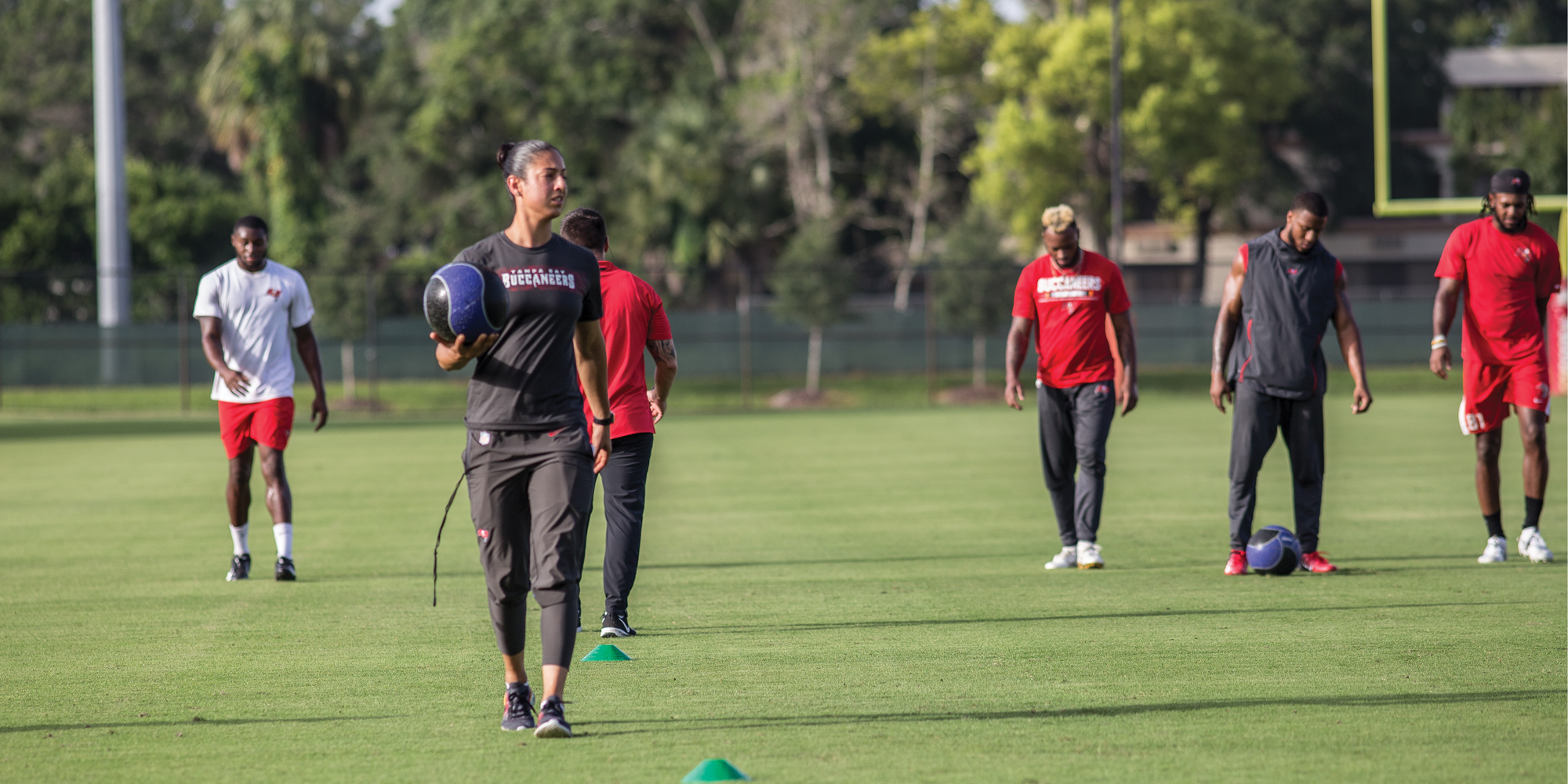
Skaggs said that some organizations “place everything in different silos, usually separated by walls.’’ Even though they have the same objectives, the training room doesn’t have easy access to the strength, conditioning and weight room. The nutritionist might be in a different area than the massage therapist. The coaches could be out of sight.
“We want to get those areas coordinated, so everyone can share information and do their jobs at the highest level,’’ Skaggs said. “We’re bringing in like-minded people who can get players to perfect the very specific jobs they have.’’
Skaggs will measure player availability, their level of training and performance, as well as how rehabilitation methods prevent recurring injuries. They’ll be using enhanced technology to evaluate players, but medical care will never lose the human touch.
Bucs assistant strength and conditioning coach Maral Javadifar, who has a doctorate in physical therapy, injured her anterior-cruciate ligament as a high-school basketball player. She was inspired by the collaboration between a strength coach and therapist, which allowed her to play at Pace University. She found a calling to train athletes.
“I want to learn who they are and try to put myself in their shoes,’’ Javadifar said. “I understand what it takes to come back from injury — maybe not at their level — and I can empathize with them. We want to make them the best they can be and keep them on the field.’’
Months of assessments — for strength, movement and potential imbalances — established baseline measurements and a starting point for individual goal-oriented condition- ing programs. Bucs head strength and conditioning coach Anthony Piroli said he wants players to emphasize efficiency. That means building strength to become a better player, not just working to bench-press 400 pounds for the first time and impress teammates.
“It’s about getting guys to focus on the main thing — and that’s playing the game,’’ Piroli said. “All too often, you see guys chasing numbers [in the weight room]. They wonder why they have these big strength gains in the offseason and why it doesn’t show up in the fall.
“Well, there’s more to it [becoming a better player] than max strength while you’re lying on a bench or underneath a barbell.’’
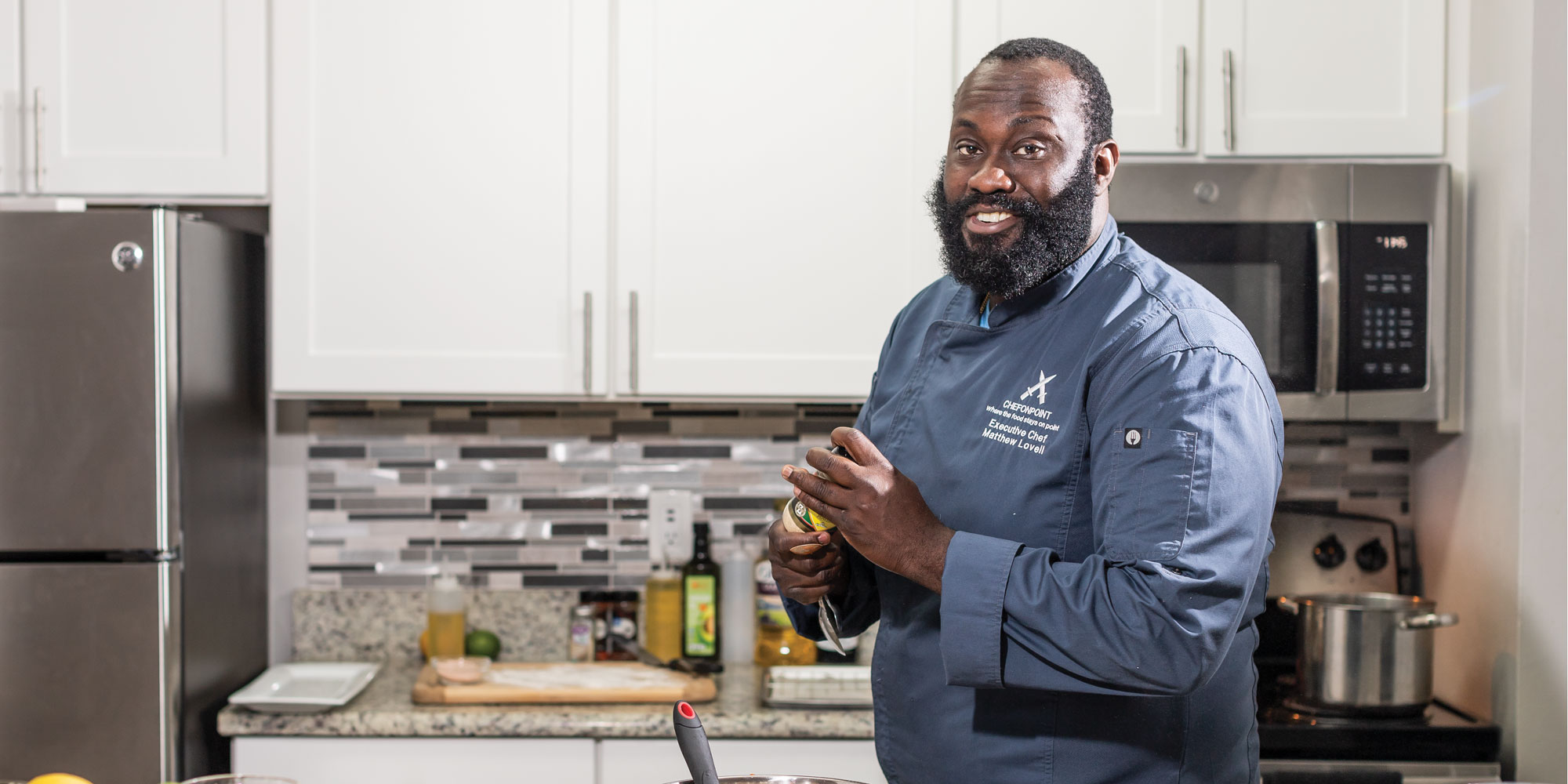
Nutrition is an important element of on-field performance. Although many pro teams have a nutritionist or dietitian on staff, some players hire personal chefs for meal preparation and dietary discipline. Tampa chef Matthew Lovell cooks for Bucs defensive linemen Vita Vea and Noah Spence and offensive lineman Donovan Smith. They have a grab bag of needs. Vea, listed at 347 pounds, favors Polynesian-style food. Spence, who was featured in ESPN the Magazine as he sought offseason meals that consisted of 9,000 calories a day, wants to gain some pounds. Smith likes a clean and lean meal.
“Nutrition has almost become a fad, but athletes certainly know how fatty foods and non-nutritional foods affect their performance,’’ Lovell said. “I prepare meals geared to the individual. Basically, I clean it up for them.
“I’ll give them the steak they ask for, but it will be real lean. They won’t have to worry about butters or fats. I give them foods they know. But instead of vegetable oil or canola oil, you’ll see avocado oil or grape-seed oil.’’
The proof is in the performance.
“Sometimes they’ll say, ‘I haven’t seen you in a few days, so I’ve been eating this and that and now I feel like crap,’” Lovell said. “They’ll come running back. If you’re an athlete, what you put into your body really matters.’’
The Mental Game
Some people might describe Tom Hanson as a sports psychologist. He thinks of himself as a coach — of the mental game.
“It’s about freeing players from their fears and frustrations,’’ said the Tampa-based Hanson, also a public speaker and author who once worked with the New York Yankees and Texas Rangers. “That allows their talent to show up in competition. It’s about performance enhancement.’’
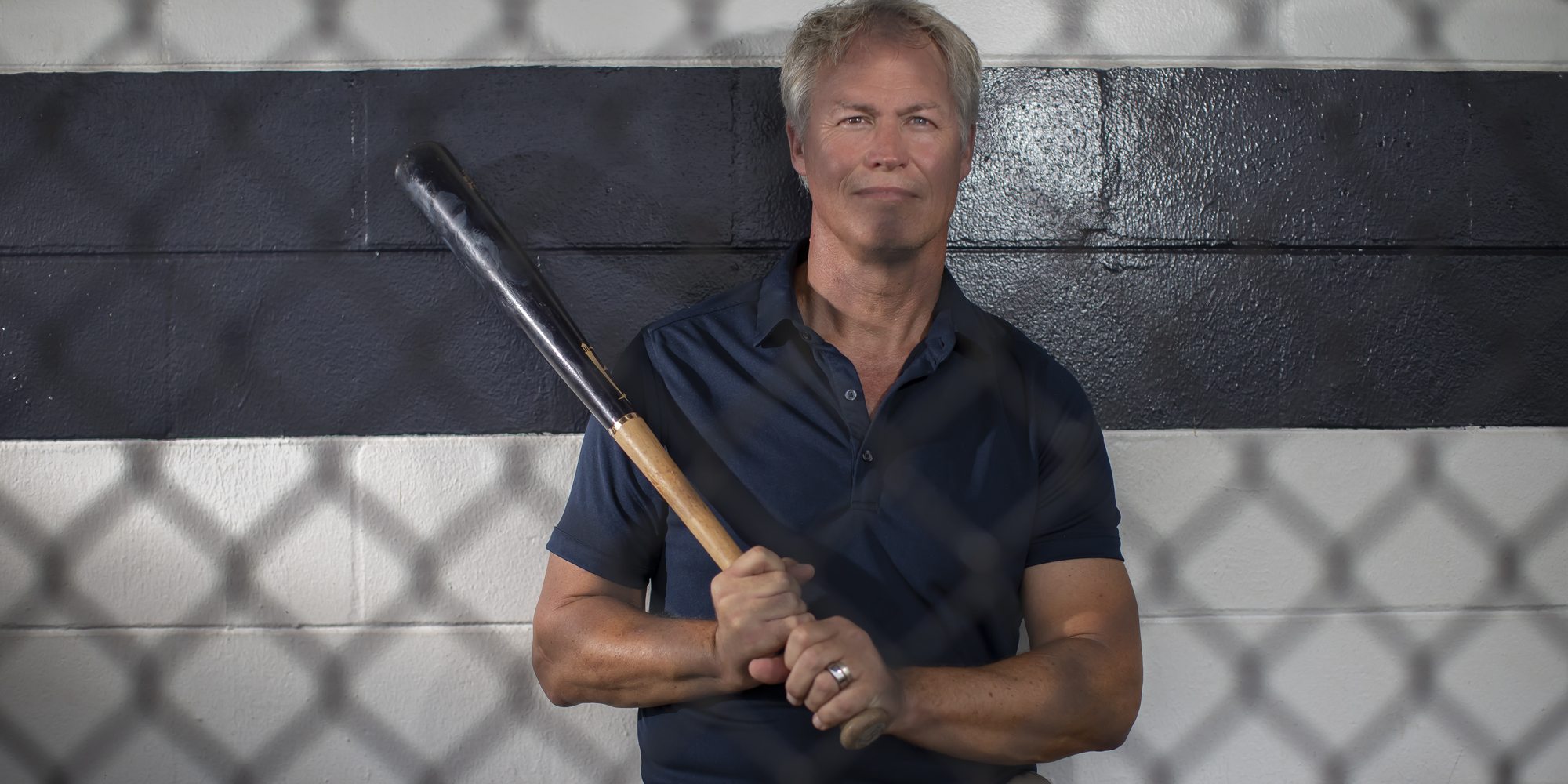
Hanson, best known for his baseball work, coached at the college level. He has counseled individually with players from MLB to Little League. He said there has been “a very big revolution’’ in the way professional athletes accept and utilize mental-skills and performance coaches.
Still, even though most players realize they should focus on the process — strictly the art of enlightened improvement — there’s a hard- to-ignore emphasis on the scoreboard and individual statistics.
“I love the quote, ‘To know something, but not to do it, is not to know it,’ ‘’ Hanson said. “We know should eat good foods and exercise. Why don’t we do it?
“Effective people can execute the cliches, like taking it one pitch at a time. I help people close the gap between what they know they should do and what they actually do.’’
When Hanson first worked with MLB teams, there were about four organizations that used a mental or performance coach. Now almost all teams formally employ such a professional. For the Rays, it’s Justin Su’a, the team’s top mental skills coach.
Many players in the other professional leagues utilize psychologists. The NBA Players Association has launched a Mental Health and Wellness Program that assists with mental health challenges. The NFL’s Seattle Seahawks has players who train in mindfulness and meditation. In 2018, Tish Guerin was named mental health counselor for the Carolina Panthers. She became the NFL’s first in- house therapist.
Guerin has said she believes her field will expand in the NFL, perhaps shattering the stigma where vulnerability could be perceived as a weakness. Hanson doesn’t sense a stigma in baseball, mostly because he said he espouses common sense. He joked if “everyone had a wise grandmother they talked to, we’d be out of business.’’ But some things go deeper.
Hanson said Western thought generally emphasizes tangibles, while Eastern thought often looks inward.
When someone swings too long and his hips are opening too soon, the Western eye focuses on that and the answer is, ‘Shorten up,’” Hanson said. “Not that it’s wrong, but the source of that physical issue is actually a thought.
“He’s thinking of hitting a home run. Or he’s afraid to strike out. It’s showing up as a physical symptom, but the root cause is a thought. We’re actually quite a ways from having that [theory] completely accepted.’’
Hanson sometimes asks groups how much of athletic success can be attributed to confidence, focus and the ability to handle adversity.
“People usually say about 80%,’’ Hanson said. “Then my question becomes, ‘What percentage of your time, energy and resources are invested in the mental game?’ It’s usually very little. That’s where we are. People know it’s important, but don’t do it nearly enough. Thankfully, athletes are doing it more and more.’’
The Athletic Triage
Chuck Slonim, who has worked with the Lightning since their inaugural 1992-93 NHL season, is an eye doctor who performs plastic surgery, such as eyelid reconstruction. During games, though, Slonim has become known for more than eye care.

“We [Lightning doctors] sit right by the tunnel about three rows from the glass,’’ Slonim said. “We can hop right over. If somebody is limping, the orthopedist goes out. If it’s a possible head injury, the internist goes out. If you see blood, I go out.’’
Slonim is the Lightning’s primary “cut-man,’’ quickly stitching up wounds in the medical room and usually sending the player back to the ice.
“In my normal practice, you have patients asking if they can have two weeks off [to recover] and wanting a note for their employer,’’ Slonim said. “Hockey is a different kind of workplace. Sometimes, I’m barely finishing sewing somebody and they’re ready to go back into the game.
“I don’t recall a player saying, ‘Give me more time [off the ice].’ We think of the player first. You don’t want unnecessary risks. But they have a warrior mentality.’’
Slonim agrees with Bucs head team physician Arnold Ramirez, who compares game day to the triage atmosphere you’d find in battle or disaster situations.
“Football players are basically running full speed into brick walls every game,’’ Ramirez said. “It’s a collision sport. There are consequences for doing that.’’
Musculoskeletal injuries are common and the X-ray room at Raymond James Stadium gets quite a workout. Ramirez also has an array of game-day protocols to follow, particularly the NFL-mandated stipulations for head injuries and potential concussions. Then there’s the constant concern of dehydration, particularly when playing the first month of home games with an average temperature of 90 degrees and an average relative humidity of 81%.
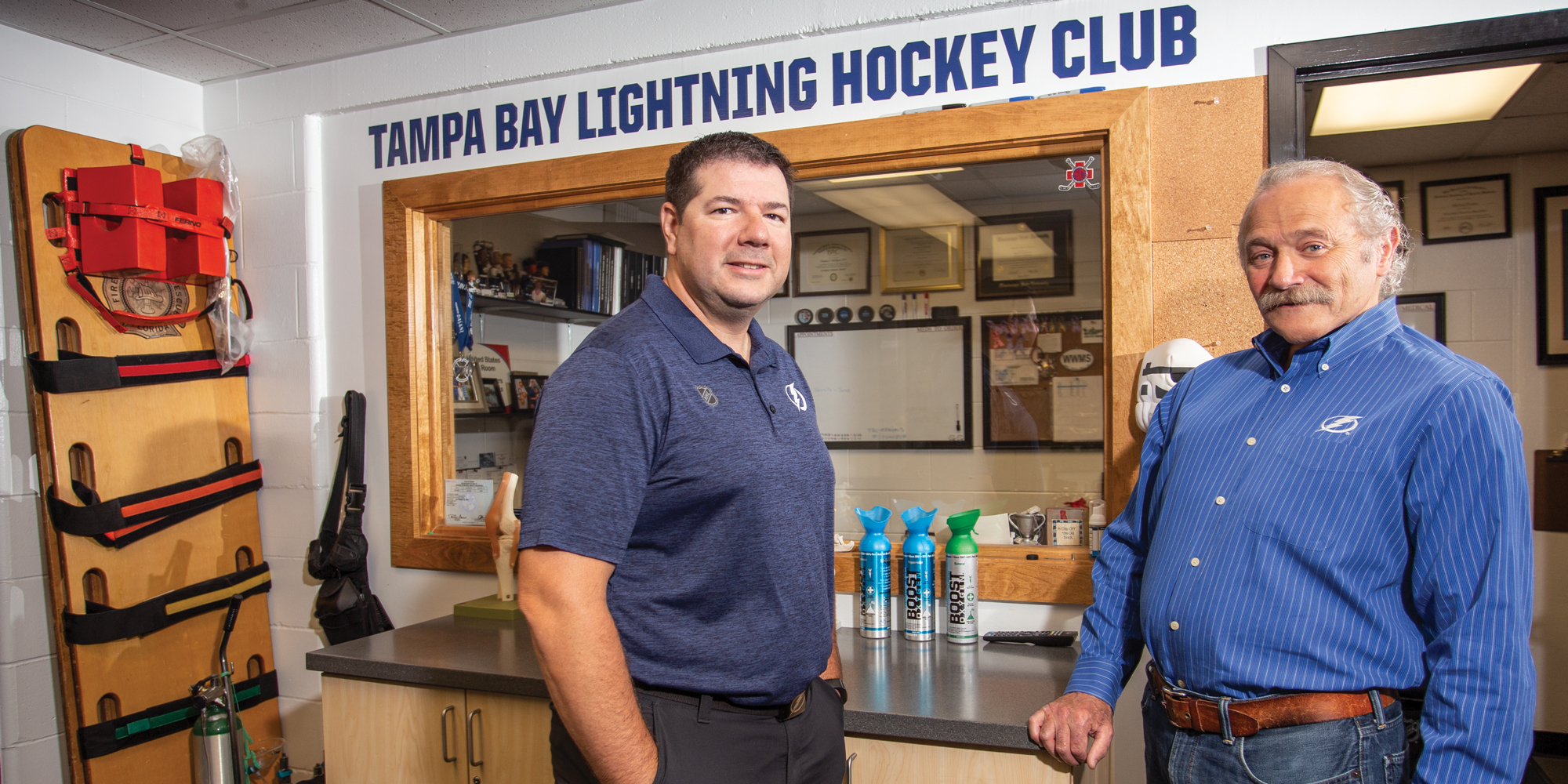
Hockey might avoid humid conditions, but with NHL players skating around on blades sharper than the scalpels Slonim uses in the emergency room, it’s probably the sports world’s leader in stitches. Slonim said he once gave 89 stitches to former Lightning player Jassen Cullimore, who had a facial laceration. Somehow, Cullimore argued that it was actually 91 stitches. “Maybe that sounded more impressive,’’ Slonim said with a laugh.
Hockey isn’t quite as bloody as a few decades ago, when enforcers roamed the ice. Slonim remembers constantly being told he’d be needed in the other locker room for stitches because a retaliatory fight was coming.
“Times have changed,’’ Slonim said.
In our world of professional sports, though, behind-the- scenes professionals have kept up with the times. Injuries are addressed as always. Now mental skills have a key role. Off-game nutrition is important. Players even hire their own people — anything for an edge.
The Bucs, Lightning and Rays employ experts in all the medical specialties. Health in the season’s standings is often dependent on the care they receive. It comes from many ever-evolving disciplines. Forget a village. These days, it takes more like a small town to keep a modern athlete up and running.
The Recipes
Red Snapper Filet with Mango Cucumber Mint Relish and Sautéed Zoodles

By Chef Matthew Lovell of Chefonpoint
INGREDIENTS
1 lb. snapper filets
1 cucumber
1⁄4 cup shallots
1⁄4 cup green bell peppers
1⁄4 cup red peppers
1 bunch mint
1⁄2 tbsp. chili flakes
8 oz. vinegar
Salt and pepper to taste 1 zucchini, spiraled
1 yellow squash, spiraled
DIRECTIONS
Score snapper filets skin side up. Season filets with salt and pepper. Dust filets with flour. Set stove to medium. Add oil. Put filets in hot oil and cook until golden brown (3 to 4 minutes each side)
Mango Cucumber Mint Relish
INGREDIENTS
1 mango (preferably firm), diced small 1 seedless cucumber, diced small
1 red pepper, diced small
1 green pepper, diced small
1 shallot, minced
1 bunch mint, chiffonade (ribboned) 1⁄4 tbsp. chili flakes
8 oz. vinegar
Salt and pepper to taste
DIRECTIONS
Add and fold all ingredients in a bowl. Let chill for an hour.
Quinoa, Shrimp & Spinach Salad
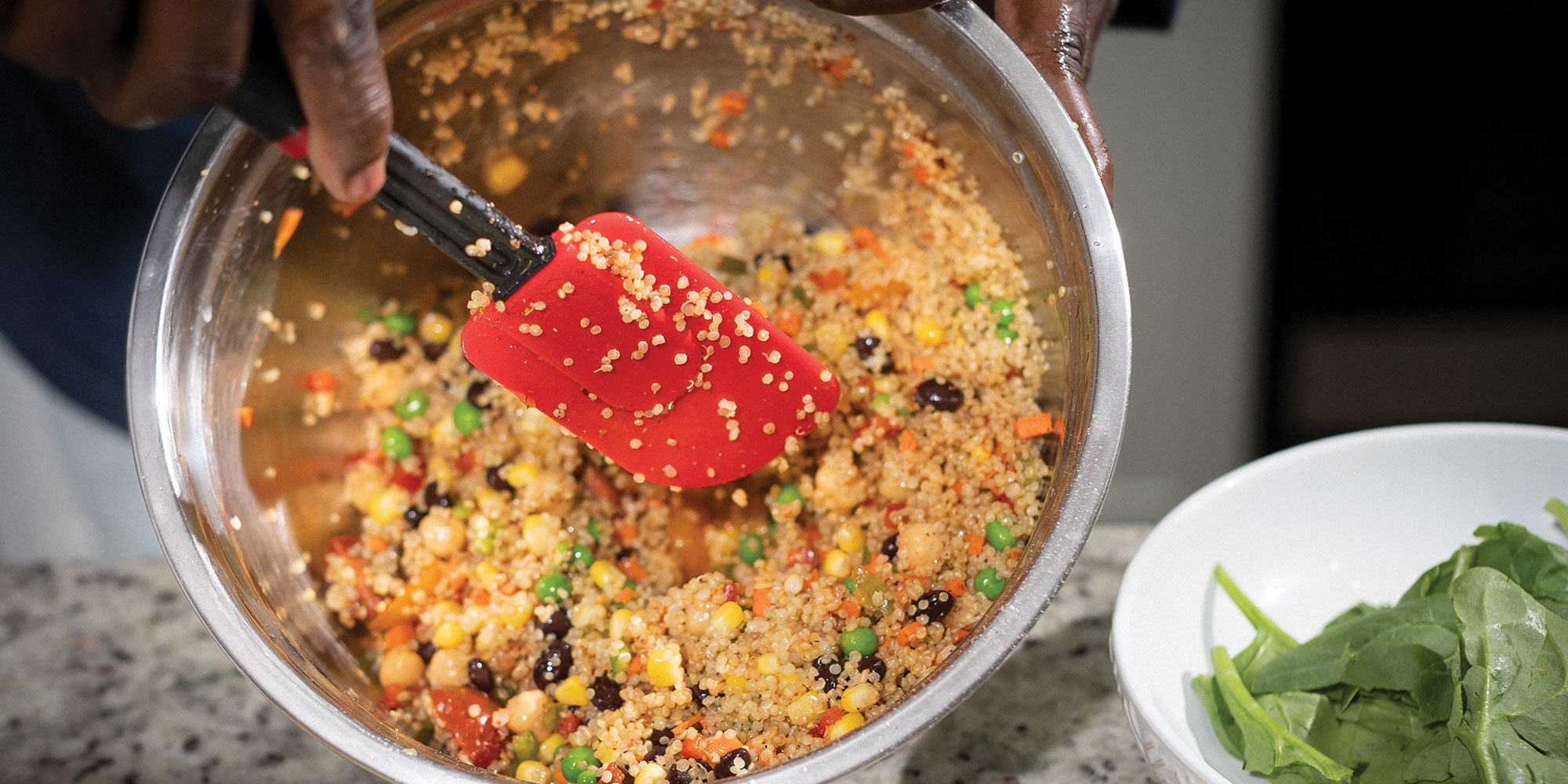
INGREDIENTS
1 cup of quinoa
1 lb. shrimp, deveined
1 1⁄2 cup water or vegetable stock
1⁄2 cup shallots
1⁄4 cup carrots
1⁄4 cup celery
1 cup black beans
1 cup chickpeas
1⁄4 cup corn
1⁄4 cup peas
Heirloom tomatoes (as many as you’d like), diced in quarters
Spinach (as much as you’d like)
1 bunch cilantro, chopped
1⁄2 tbsp. cayenne pepper
1⁄2 tbsp. red pepper flakes
1 tbsp. cumin or more (to your liking)
1⁄2 tbsp. coriander
1⁄2 tbsp. chili powder
1⁄2 tbsp. cardamom
1 tbsp. lemon juice
Salt and pepper to taste
DIRECTIONS
Bring water to a boil. Add quinoa. Let it boil for 1 minute, then reduce pot to simmer for 10 to 12 minutes. Put the quinoa in a bowl with the rest of the ingredients. Add oil and lemon juice for an added pop of flavor.

